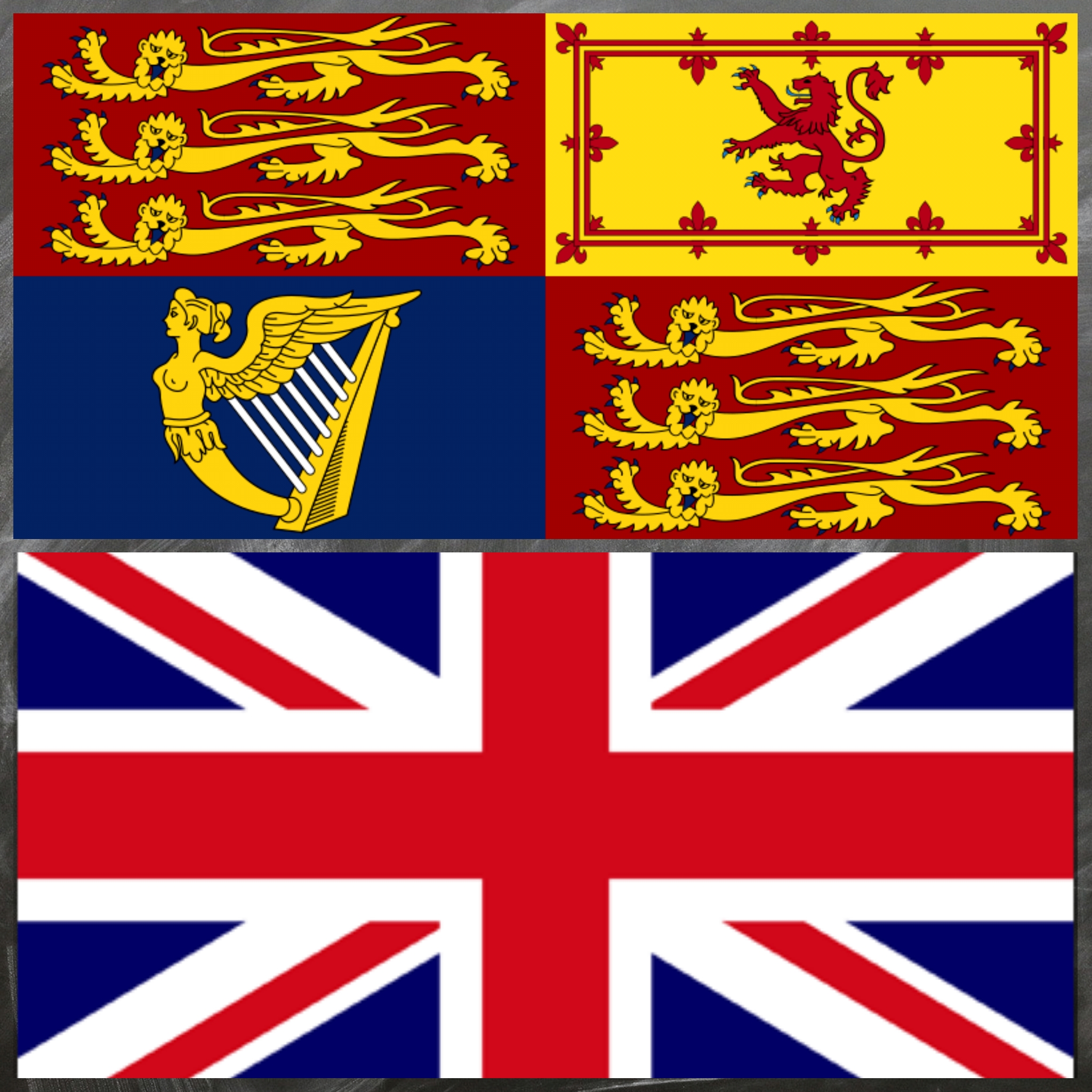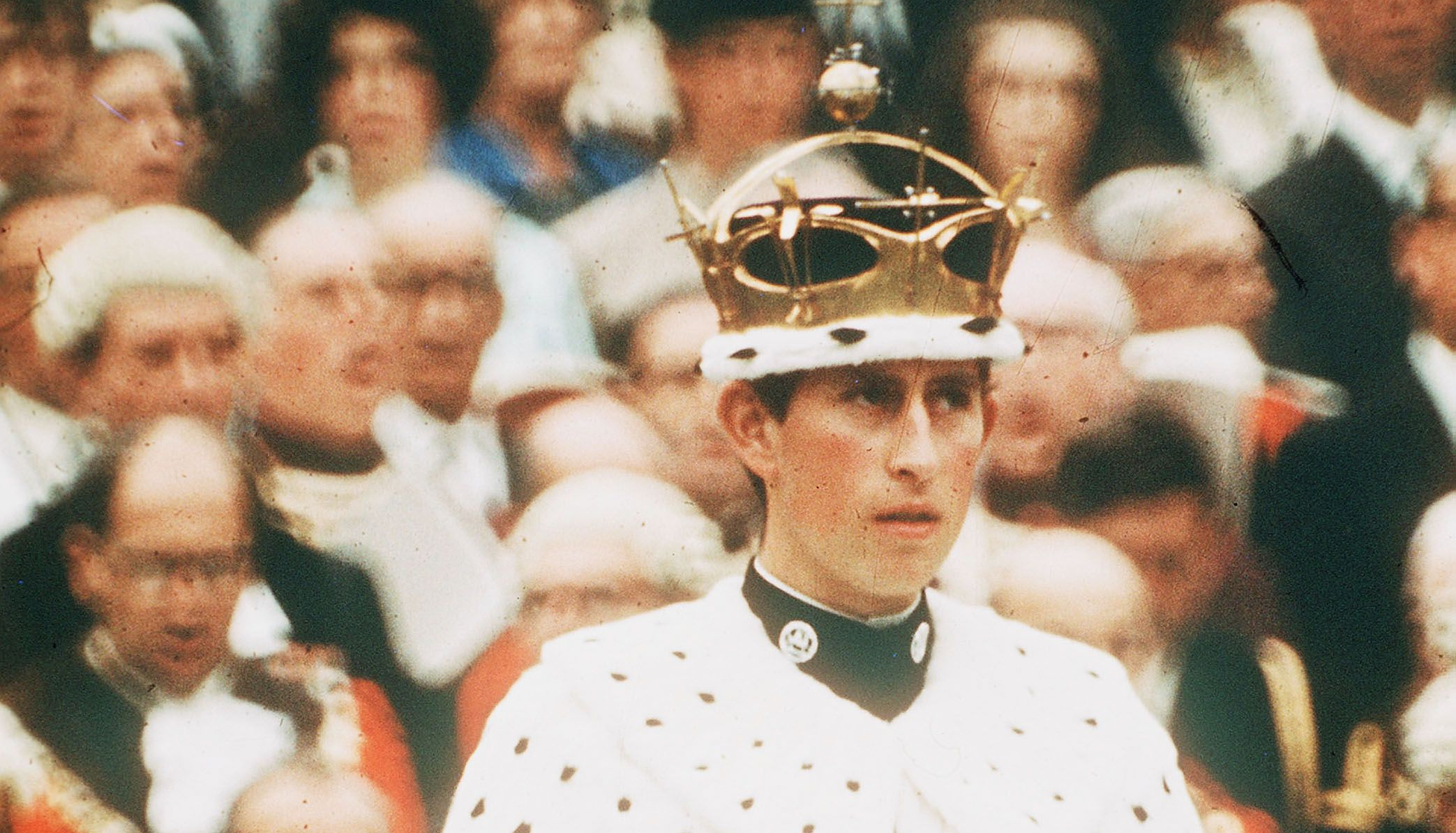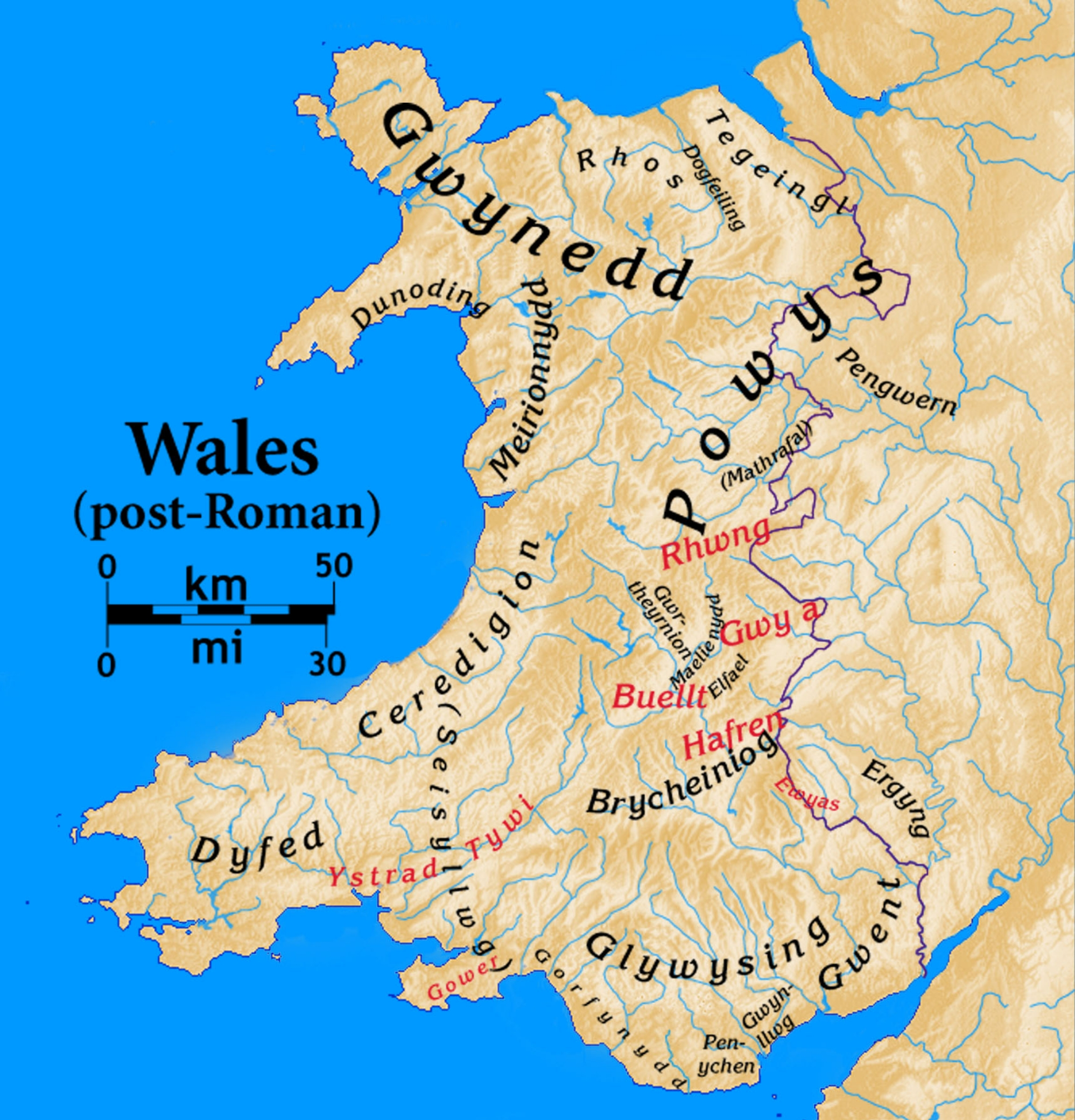The death of Queen Elizabeth II on 8th September 2022 has prompted numerous changes among the Royal Family, big and small. Prince Charles and his wife are now King Charles III and Queen Camilla. Angela Kelly, one of the queen’s closest confidantes and responsible for the queen’s iconic sense of style, will now perform her final duty in selecting the clothes the queen shall wear to her funeral. And the queen’s corgis are going to live with Prince Andrew. Our thoughts are with them at this difficult time.
One of the most visible and indeed, expected, changes was that Prince William, now the heir apparent, would be created Prince of Wales. The heir to the British throne has traditionally been known as the Prince of Wales for centuries and it’s suggested that this is why Wales remains unrepresented in any regalia connected to the United Kingdom.

Despite the longevity of the role there was still, for many in Wales, a sense of shock when King Charles gave the title to his son in his very first address. The address was made at six o’clock in the evening and by six o’clock the following morning, a petition calling for the title to be scrapped had gathered over ten thousand signatures.
Contrary to what the comments section of the Daily Mail might have you think, this isn’t because the Welsh have a deep and abiding hatred for the monarchy, the English, or both. There are, in fact, a myriad of political and historical reasons why the number of people wanting to abolish the title of Prince of Wales is steadily increasing. And while the historical reasons may stretch back centuries, we’ll see that in some surprising ways, their implications ripple through time and still affect a nation.
The Princes of Wales
The title ‘Prince of Wales’ originated in Medieval Wales when the country was made up of several smaller kingdoms, each with its own prince. They had previously been known as the Kings of the Britons but this title fell out of use after the Norman conquest of England. Without the unity of a Celtic Britain, it became common for the rulers of each kingdom to rule instead as Princes, with the borders of their realm changing frequently.
The new King of England, William the Conqueror, attempted to extend his rule into Wales, as did several of his successors but they were unsuccessful. They were repeatedly driven back by Welsh forces. Henry II met with one of the most significant defeats of his reign that almost cost him his own life in the rout. Having managed to establish their authority in a stretch along the South Coast of Wales, the English kings gave authority to several Earls installed as the Marcher Lords.
As a quick aside, although the Welsh kingdoms were small and lacked unity, they were still recognised as actual kingdoms. These princes were not provincial lords; they held court, they engaged with diplomacy on an International scale and not just with their English neighbours. In 1267 King Henry III and Llywelyn ap Gruffudd, who at that time had united much of Wales under his rule, signed the Treaty of Montgomery. The Treaty was significant as it had the English sovereign recognise the Prince of Gwynedd as an authority, as well as his right to rule all of Wales.
The Great Betrayal
Henry III was the first monarch to recognise Welsh authority in Wales. His son Edward however, was less keen. While the Treaty of Montgomery recognised Llywelyn ap Gruffudd’s claim to rule Wales, a handful of Welsh princes objected. They came to terms with Edward under the assumption that England would allow them to rule unhindered within their own territories. They then allied against Llywelyn and were sheltered by Edward as they launched raids into Gwynedd.
Llywelyn and Edward’s relationship deteriorated further when, in 1275, Edward summoned Llywelyn to pay homage to him as King of England. A request Llywelyn refused. That same year, Llywelyn married by proxy Eleanor de Montfort, the daughter of a prominent royal rebel, which Edward took huge exception to. When Eleanor travelled to meet her husband, Edward hired pirates to capture her ship and had her imprisoned in Windsor Castle as incentive for Llywelyn to acquiesce to English terms.
Llywelyn did not and the following year, Edward declared war. The war, such as it was, was brief. Edward was in a hugely advantageous position; Llywelyn’s neighbours had allied with Edward, and after they blockading Llywelyn’s supplies, the Prince conceded and a new treaty was formed. The Treaty of Aberconwy was ratified in 1278 and limited Llywelyn’s power to the kingdom of Gwynedd. Edward also used the fact that Eleanor was still in his power to obtain other concessions from Llywelyn but the result was that Edward then paid for their wedding and gave the bride away.
The two were apparently very much in love, unusual for a political marriage at the time, but Eleanor died giving birth to their daughter, Gwenllian, in 1282. Her loss would largely be overshadowed by the increasing stirrings of rebellion in Wales and not just from Llywelyn. The princes who had previously sworn to support Edward hadn’t received the support they expected in return. Instead, they’d been antagonised by their English neighbours and the crown. The rebellion quickly became less about individual grievances with the king and more about the Welsh desire to expel English authority from the country. As a result, it garnered immense support from all corners of Wales, and they were so successful in holding their ground that England turned to diplomacy. Llywelyn was offered an estate in England in return for surrendering the kingdom of Wales to Edward. Llywelyn refused.
As 1282 drew to a close, Llywelyn and Edward met at the Battle of Orewin Bridge. The result was Llywelyn’s death and a catastrophic defeat for Wales, however Llywelyn’s death was far from clean. Reports of what actually happened differ but the consensus is that he was murdered by the English. He didn’t die in battle fighting, which would have seen him as a casualty of war. Instead, it looks like he was invited to engage in diplomacy (which would have seen him protected under the flag of truce) and killed once he was separated from his troops. While the details differ, the common thread in the various versions is that Llywelyn was lured away from his supporters under false pretences and murdered.
After his death, his body wasn’t treated with the respect due to a nobleman. He was paraded before the English troops fighting in Wales before being taken to London. There, he was put in a pillory (yes, he was dead) and crowned with ivy as an insult. When he was finally beheaded, his head was again paraded around the city before taken to the Tower of London where it would remain, displayed on a pike, for over a decade.
In the meantime, Llywelyn’s daughter, Gwenllian of Wales, was only some months old so succession passed to his brother Dafydd ap Gryffudd. Dafydd continued the rebellion for a few more months before he was betrayed and his location given to the English. He and his family, including the infant Gwenllian, were captured.
His sons were imprisoned and disappeared shortly after, prompting rumours that they’d been murdered. The female relatives were imprisoned in a convent where they would remain for their entire lives. Dafydd on the other hand was taken to suffer a fate worse than his brother. He was not afforded the dignity of a nobleman and treated as badly as the worst of the common criminals. He became the first person to be convicted of high treason and the first noble to ever suffer being hanged, drawn, and quartered. He was tortured before being dragged through the streets of Shrewsbury, tied to the back of a horse. There he was hanged, drawn, and quartered, being specifically revived between each stage.
With the Royal House of Aberffraw removed, Edward divided Wales between English lords and built numerous castles from which to impose English rule upon the people. The castle he built at Caernafon would serve as the birthplace of his son and heir, also called Edward. There are suggestions that this was meant as an honour but there is no evidence to support this claim. There is evidence to support the alternative claim that it was a deliberate insult in taking the native title and giving it to the conquering sovereign’s son.
Y “Brins” yn nglawd y gân: The English Princes of Wales
Since the English crown took the title ‘Prince of Wales’ for their own there have been few claimants who rose up to claim it for Wales again. Those who did usually met as unsavoury end as Llywelyn and Dafydd. Madog ap Llywelyn, an indirect survivor of the Aberffraw family ended his life imprisoned. Llywelyn Bren was pardoned his rebellion only to be illegally hanged, drawn, and quartered by the noble tasked with conveying him home. Owain Lawgoch was murdered by an English assassin who was told to pose as a friar in order to get close to him.
The last Welshman to be known as Prince of Wales was Owain Glyndwr in the fifteenth century. He led an uprising against the English nobles who were increasingly antagonistic to the Welsh. His rebellion met with mixed success and petered out of its own account. As a result of it however, the English parliament imposed penal laws against the Welsh which would remain in place for a further four hundred years. According to these laws Welshmen could not hold any kind of office, they could not own significant land or castles, they couldn’t bear arms or wear armour, they could not congregate in groups, and Englishmen could not be convicted by a Welshman. Bards were also banned, ending an ancient tradition.
In 1746, Wales was stripped of its legal status and became an extension of England. This continued a campaign of what many saw as erasure of Welsh identity. While the roots may have been laid down centuries ago, many see the campaign as continuing today and there are many modern examples of Welsh culture being suppressed in favour of English rule which many feel is personified in the title of Prince of Wales.
This isn’t helped by the fact that a vanishingly small number of Princes who have held the title have shown any kind of interest in Wales. The Investiture Ceremony is hardly one of historical significance and has been performed a grand total of [insert fanfare here] twice. Once in 1911 for Edward who would become Edward VIII, best known for his abdication, and again in 1969 for Prince Charles, the most recent holder.
Charles was unusual in that he had actually spent some time living in Wales. As a student in university, he spent a term at Aberystwyth learning Welsh but for some, the honour was diluted by the widespread knowledge that Charles only did so under extreme duress. There is, in fact, an episode of The Crown devoted to how little Charles wanted to go there, and how little regard the country is held in by the Royal Family. Granted, this is a fictional representation, and in reality, Charles went on to give the first two paragraphs of his investiture speech in Welsh before rarely revisiting the language since.
Despite its long history, the Prince of Wales title is not an automatic right. It is not hereditary and in a poll taken in the 2000s, only 57% of Welsh people indicated that they wanted the role to continue with only 31% of them wanting an investiture. There has been a great deal of conversation about whether the title would pass to Prince William in the event that Charles became king. Many have said that he redefined the role of Prince of Wales but in actuality he redefined the role of heir apparent. The title itself holds as little prominence now as it did when he was invested with it.
I think she [the Queen] is a remarkable person who has done exemplary service to the country, and you know sadly she won’t be with us for much longer, I guess. And when that changes and traditional requirements would mean that the prince of Wales would become a new person and a new Englishman it would be, I think, a really meaningful and powerful gesture, let’s say, for that title to no longer be held in the same way. That would be an incredibly meaningful thing I think to happen and I’m asking for no more or less than just to make a break there. Put some things that have been wrongs of the past right. There’s an opportunity to do that, at that point. Don’t necessarily just because of habit and without thinking just carry on that tradition that was started as a humiliation to our country. That’s what it was. It was a humiliation… Why not change that?
Michael Sheen (Actor and Welsh activist) December 2020
The conversations about the title were abruptly silenced when King Charles III created his son, Prince of Wales. This was done without notice and passed on as a right of the English crown in his first statement as King. The people who oppose it have little against Prince William and his wife, Catherine, who now hold the title but oppose the use of the title itself. It holds no formal public role and no responsibilities which makes it less than every other title bestowed by the Royal Family. In the same statement even, the king referred to the duties he had undertaken as Duke of Cornwall, a position which he valued enough to make his home near the county. Duchy of Cornwall trumps Princedom of Wales.
Ultimately, the title Prince of Wales is historically draped in contention. Obtained by the English crown through murder, preserved by murder, and wielded over a people who have been actively suppressed throughout history in events that can’t be brushed aside as ancient history when their legacy is actively embodied today, it was always going to be a controversial decision to pass it on without so much as the courtesy of conversation. The fact that it then played out exactly like that is proof, if it was needed, and it really wasn’t, for the twenty thousand people (and rising) who have signed the petition that Wales still has some ways to go in the battle for self-determination.
If you’d like to join me for more fun and games in picking apart history, and other behind the scene tangents, you can support me via my Patreon.














